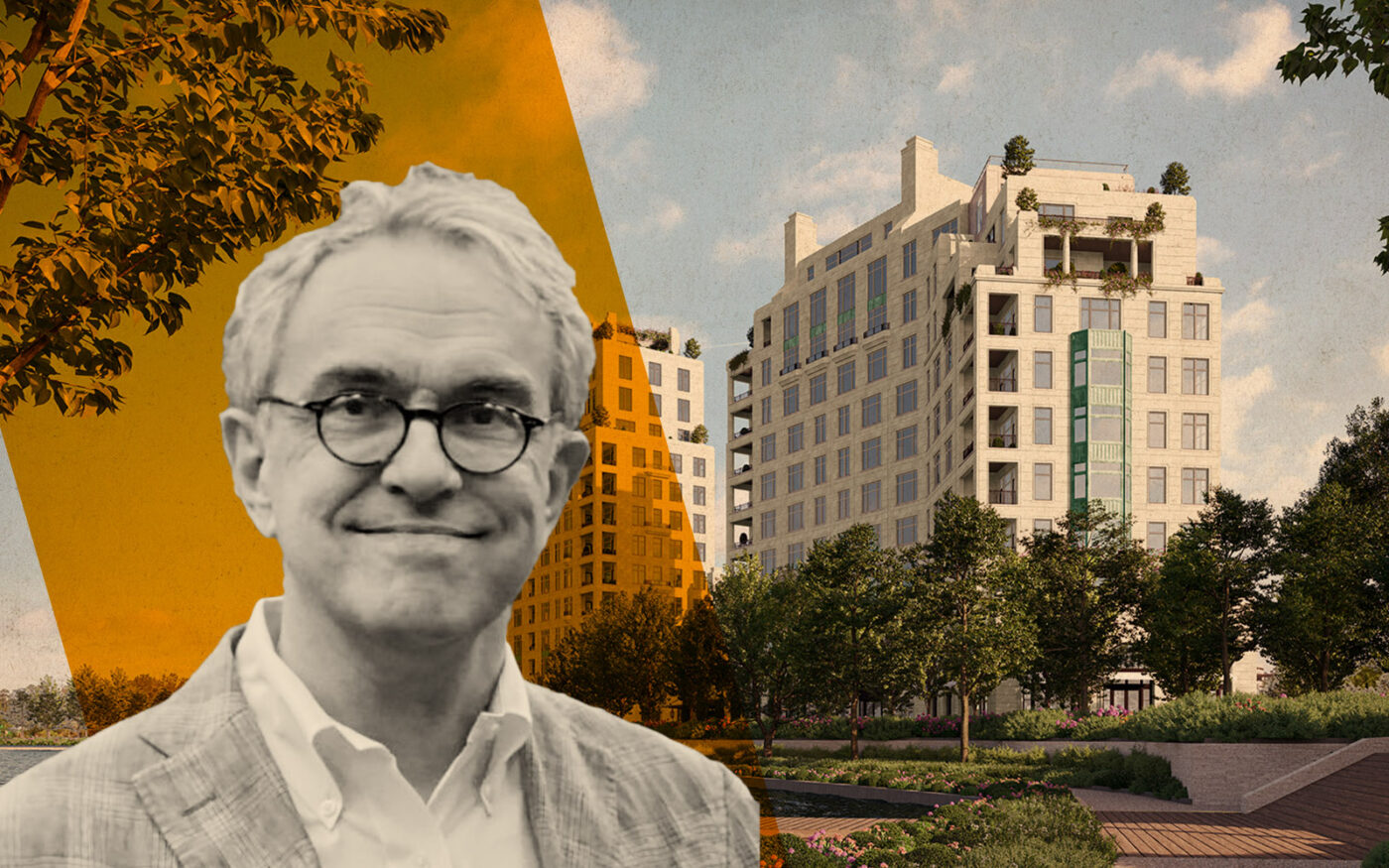
Trending
How Robert A.M. Stern Architects designed a Ritz fit for Houston
Paul Whalen breaks down his regional influences, design strategy and love for gardens

If anybody can persuade wealthy Houstonians to leave their single-family homes for a high-rise, it might just be Paul Whalen.
Whalen, a partner at Robert A.M. Stern Architects (RAMSA) has led the design teams for some of the shop’s most notable projects, including 15 Central Park West in New York, credited with sparking a condo craze all along the tony parkside avenue. Now, after working everywhere from Manhattan to Hong Kong, Whalen has headed to Houston.
RAMSA was brought on to design the Ritz Carlton Residences, the Woodlands, Howard Hughes’ latest luxury project in the master-planned community. Whalen and his colleagues aim to turn just under 9 acres of lakefront land into a condo building fit for Houston royalty.
So far, their plans feature 111 condominiums with a restaurant, flex office rooms, a “maker space” and ornate, European-style gardens. But more than the amenities, the design of the building becomes most evident in its details — the meticulous floor plans, the facade’s ornamentation, the gentle slope down from the building to the water.
The project features a Murderer’s Row of luxury residential names, but it still needs to lure well-heeled Houstonians away from ranches and mansions and into a multifamily building.
Whalen spoke with The Real Deal about his design influences, how he approaches luxury projects specifically in Texas and why Houston’s multifamily market today reminds him of 19th-century New York.
This conversation has been edited for length and clarity.
Like many other new, top-of-the-line residential buildings, there is much more to this one than just apartments. There’s a restaurant, a gym, meeting rooms and a maker space. What do you make of the blending of asset classes going on in residential architecture?
I think it’s different in small cities and big cities. In New York, there’s sort of amenity inflation going on. A lot of buildings are being built at the same time, and one building comes in and does a restaurant, another one does a maker space. They have a bigger playroom, whatever. So when the next developer comes in, they think: “That’s the market now, and I’ve got to do that and beat it.”
I think there’s something slightly different from that happening here. Of course, it’s connected, because everybody looks to what other cities are doing. You want to bring the best of those cities here. People travel, they know other cities, they have friends in other cities. But what’s happening here takes me back to the early days of tall buildings in New York, when the Dakota was built, for instance.
When the Dakota was built in the early 1880’s, anybody with means in New York was living in townhouses. So when it was built, first of all it made it look like a huge house. And then the amenities that they put inside, like a private dining room, a huge ballroom, a lot of space for staff up in the attics, and the enormous rooms for washing clothes and ironing sheets. They were trying to get people who lived in townhouses to move out of those townhouses, and move into a building and live in the way that Parisians lived. Up to that point, New Yorkers hadn’t really liked that.
But suddenly, they combined all these amenities with very high ceilings and apartments that were just about as big if not bigger than their townhouses, often all on one floor, so they were easier to live in.
I think that in a city like Houston, where high rise living is not so common, we’re drawing on that great tradition. We’re asking “What do you do when you’re first trying to get people in the market to move to a multifamily building?”
What kind of regional influences did you consider when designing for Houston?
When we work in a new city like this, we always do our research. I’ve known about one of Houston’s great local architects, John Staub, since the late 80s, when I bought his monograph. In our office, we’re very interested in traditional regionalism. He is one of the great regional architects of the US in the early 20th century. John Staub was really the guy in Texas.
Most of his work was done in Houston, and he was educated on the East Coast, worked in New York and was a real East Coast architect. But then he moved to Texas, and his work changed in interesting ways. It became looser, but he brought all this education and these different architectural vocabularies. He knew what antebellum architecture was.
I find it interesting that Houston is really part of the South and part of the West at the same time. Staub knew New Orleans architecture, and sometimes looked to bring the metalwork of New Orleans into his houses here. He was still very literate with his architectural knowledge, and uses it in this delightful way that loosens and starts to have this kind of Texas accent.
That sense of high knowledge and an awareness of the difference between Texas and the East Coast, especially the northeast, is something that we’ve always loved about him. So we were thinking, “What we want to do is be the John Staubs of high-rise residential.”
There’s a lot of greenery in this project too. How did you conceive of the gardens?
We are enormous garden fans, because we always think of them as really an extension of the architecture. We love making gardens architectural and doing “rooms” in gardens. Because what that allows you to do is it allows you to have different experiences in a garden.
Houston, and especially the Woodlands, is a very green city. It’s lush when it rains enough. We wanted to make sure that this place feels lush and engaged with that.
In addition to those “rooms,” the landscape is laid out so there are these kinds of sprays of planting called drifts. This is a classic, English way of thinking about how you do planting in a garden. It goes back to the great English cottage gardens. [English horticulturalist] Gertrude Jekyll always talked about drifts of flowers and plants. One of the things that was very different about English gardens from French gardens is that they had this idea of formal planning with informal planting.
Houston isn’t known as a high-rise residential city. But you’ve clearly added details that make these apartments and the building look like a large home. How did you try to blend those two types of living?
We thought a lot about what it means to do a taller multifamily building in Houston, where we would be convincing a lot of people who had never lived in a multifamily building before to leave their houses and live in a different way. We were very aware of that as we designed the building.
People moving from houses want to see the sky. They want to see gardens. They don’t want to feel like they’re deep inside a building. So the living room/dining room opens up onto a kitchen. If somebody wants, they can close that off. And the living room/dining room also opens up to the library, so that those four uses — library, living, dining, and kitchen — are all symmetrically arranged in an Enfilade arrangement, like the French used to do in their palaces, and Great Houses often do.
From the outside, a nice house often has a sense of a skyline. It’s not just a flat box: you typically have chimneys and pavilions, and different things give you a sense of the skyline. We’ve done that here. It gives you a sense that you can be a special person in this community — that you’re not just in a file drawer, that there are special places in the building. You may not live in the most special place in the building, but you can see that there are special places.
Read more







